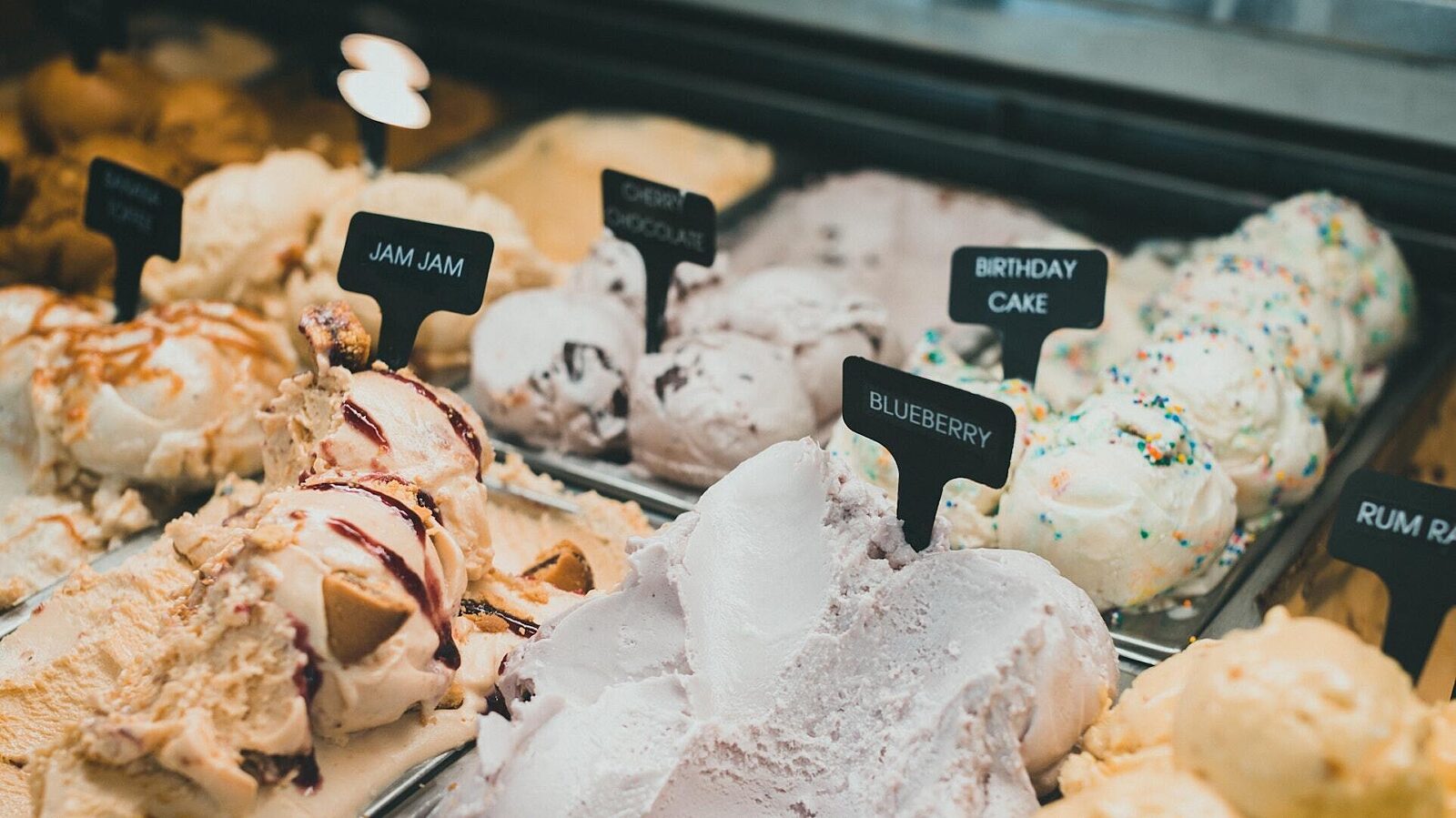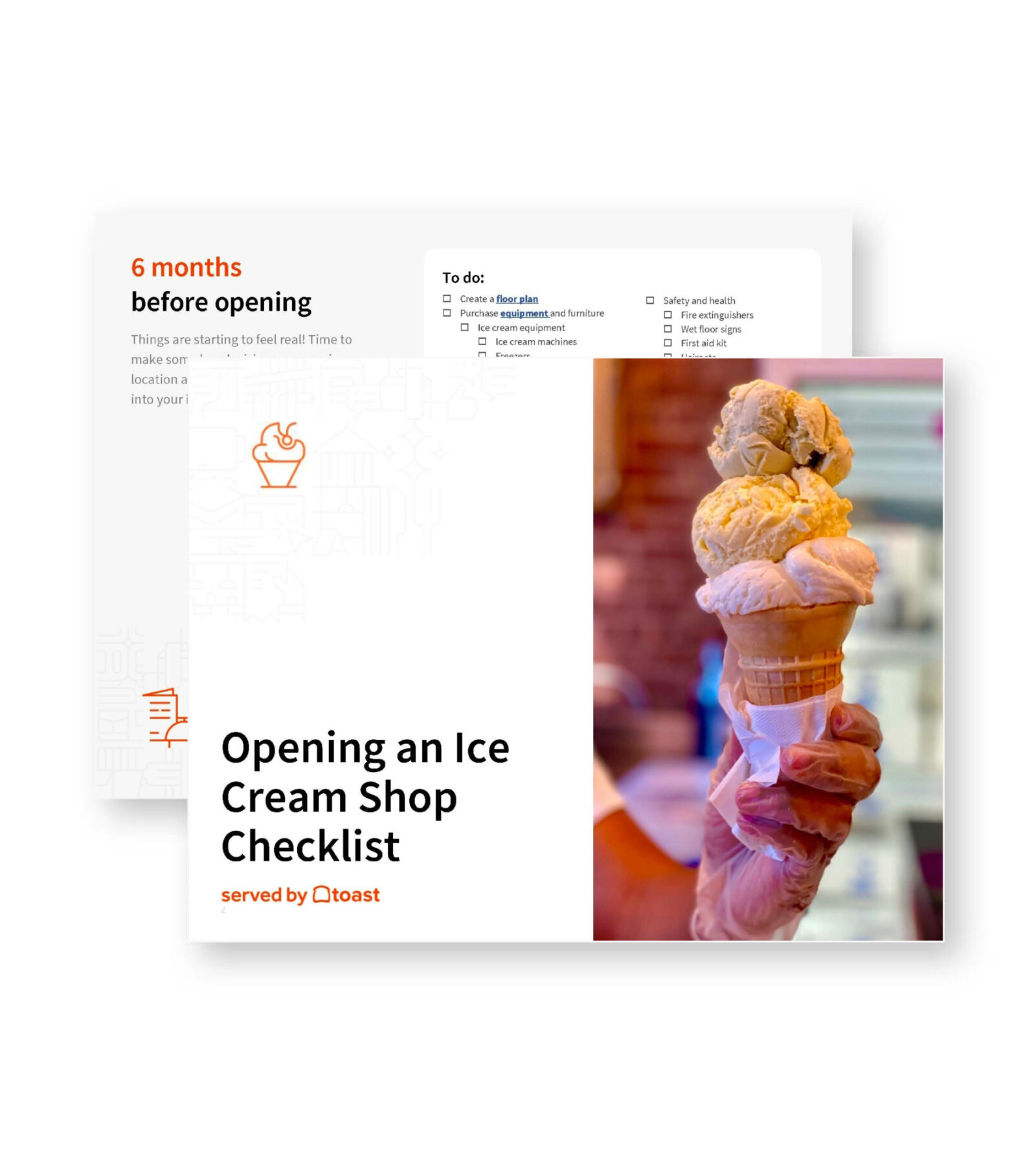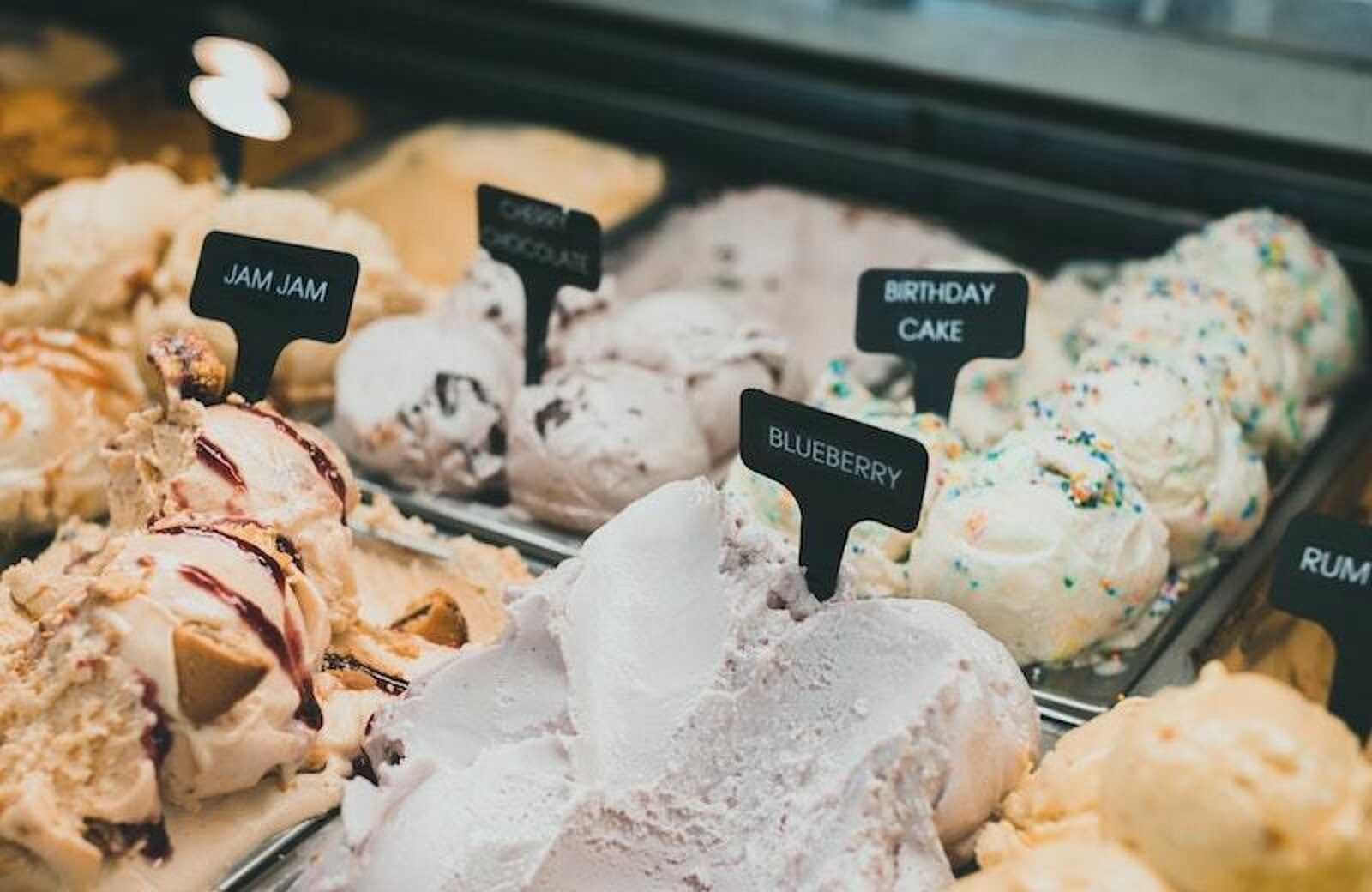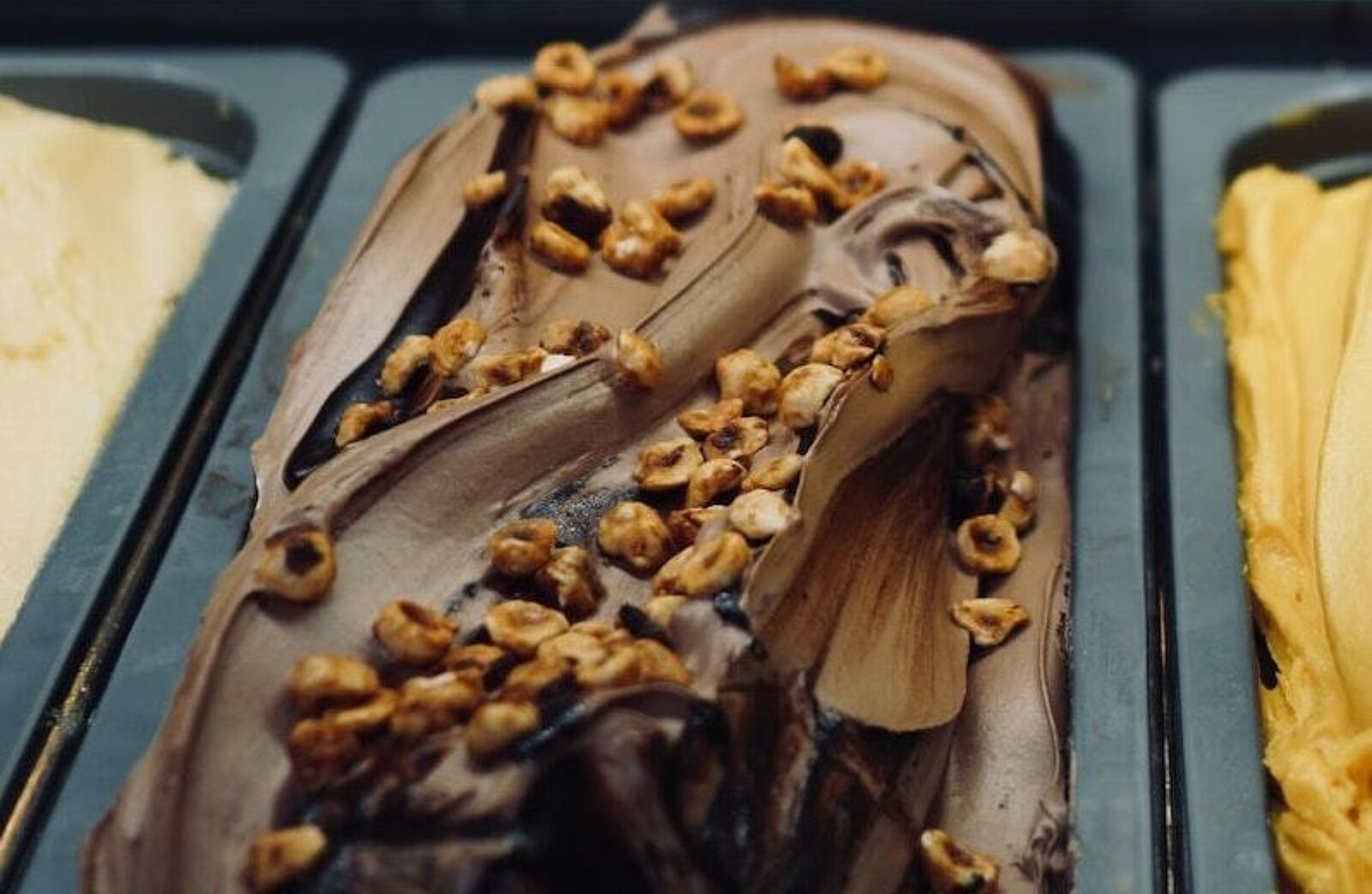
How Much Does An Ice Cream Shop Make?
Learn how to optimize your ice cream shop’s revenue and improve profit margins.
Aidan ToborAuthor


Opening an Ice Cream Shop Checklist
So many things go into opening an ice cream shop. With this free PDF checklist, you'll set your new business up for success.
Get free downloadThe monthly revenue of an ice cream shop can vary widely depending on factors such as location, seasonality, and business model. While the average new restaurant can hit higher revenue figures — up to $111,860.70 per month according to a report by Toast — smaller quick service operations like ice cream shops typically fall within a lower range due to their more specialized offerings and lower price points. Generally, ice cream shops in the United States can earn between $20,000 to $50,000 per month.
To give your ice cream shop the best chance at maximizing revenue and ensuring long-term viability, consider strategies such as diversifying your product offerings, investing in targeted marketing campaigns, and implementing customer loyalty programs. These efforts can help maintain steady customer flow, especially during off-peak seasons, and encourage repeat business, ultimately driving higher revenue and profitability.
Revenue and Profit Margins for Different Types of Ice Cream Shops
Are Ice Cream Shops Profitable?
Ice cream shops can be profitable, especially if they are well-managed and strategically located. Revenue potential depends on several factors, including the type of shop, location, customer traffic, and cost management. Ice cream shops typically enjoy healthy profit margins, ranging from 12% to 30%, depending on the business model and how well costs are controlled.
Here’s a breakdown of the revenue ranges and expected profit margins for different types of ice cream shops:
Independent Ice Cream Shops
Revenue range: $20,000 to $50,000 per month
Profit margins: 15% to 25%
Details: Independent ice cream shops are typically small, locally owned businesses. They rely heavily on foot traffic, local marketing, and community support. Seasonal variations can significantly impact revenue, with peak summer months often generating the bulk of annual sales. The lower overhead costs compared to franchises allow for potentially higher profit margins, although this depends on efficient operations and cost management.
Franchise Ice Cream Shops
Revenue range: $40,000 to $100,000 per month
Profit Margins: 12% to 20%
Details: Franchised ice cream shops benefit from brand recognition, standardized operating procedures, and bulk purchasing power. These factors often result in higher revenue potential compared to independent shops. However, franchise fees, royalties, and stringent operational guidelines can reduce profit margins. Still, the strong support system provided by the franchise can lead to more consistent revenue, even during slower seasons.
Mobile Ice Cream Businesses (e.g., Trucks, Carts)
Revenue range: $5,000 to $20,000 per month
Profit margins: 20% to 30%
Details: Mobile ice cream businesses have lower overhead costs compared to brick-and-mortar shops, which allows for higher profit margins. However, revenue is generally lower due to limited operating hours and the dependency on favorable weather conditions and event availability. The flexibility to move to high-traffic areas can help maximize sales during peak times.
Expected Profit Margins
With profit margins typically ranging from 12% to 30%, most ice cream shops can achieve a solid return on investment, especially when they effectively manage costs and attract a steady customer base. Lower margins are more common in franchised businesses due to franchise fees and royalties, while independent and mobile businesses can achieve higher margins due to lower overhead costs.
Ice Cream Shop Menu Templates
Use these ice cream shop menu templates as a starting point for your menu design or to give your menu a refresh.

Optimizing Costs to Improve Margins
To improve profit margins, it's crucial to focus on optimizing both fixed and variable costs. Here are five areas where costs can be managed more effectively:
Inventory management: Reducing waste by closely monitoring inventory, ordering the right quantities, and minimizing spoilage.
Labor costs: Efficiently scheduling staff to match peak times, cross-training employees, and using part-time or seasonal workers to reduce labor expenses.
Energy efficiency: Implementing energy-saving practices like using LED lighting, energy-efficient freezers, and maintaining equipment to lower utility costs.
Supplier negotiation: Negotiating better rates with suppliers or buying in bulk to reduce the cost of ingredients and packaging.
Marketing efficiency: Focusing on cost-effective marketing strategies like social media, local partnerships, and customer loyalty programs to attract more customers without overspending.
Fixed and Variable Costs for Ice Cream Shops
Fixed Costs
Fixed costs are expenses that remain relatively constant regardless of sales volume. Here are typical fixed costs you can expect:
Rent/Lease:
Range: $2,000 to $8,000 per month
Percentage of revenue: 5% to 20%
Details: Rent varies greatly depending on the location. Prime urban areas typically demand higher rents, while suburban or rural locations are more affordable.
Utilities (Electricity, Water, Gas):
Range: $500 to $2,000 per month
Percentage of revenue: 2% to 5%
Details: Costs can vary based on shop size, hours of operation, and energy efficiency practices.
Insurance:
Range: $100 to $500 per month
Percentage of revenue: 0.5% to 1%
Details: This includes liability insurance, property insurance, and workers' compensation.
Loan payments/interest:
Range: $500 to $3,000 per month
Percentage of revenue: 1% to 6%
Details: If the business is financed through loans, monthly payments will vary depending on the loan amount and interest rate.
Equipment leasing/maintenance:
Range: $200 to $1,000 per month
Percentage of revenue: 0.5% to 2%
Details: This includes the cost of leasing equipment like freezers, refrigerators, and POS systems, as well as maintenance expenses.
Variable Costs
Variable costs fluctuate based on the volume of sales and include the following:
Ingredients/Supplies:
Range: $5,000 to $15,000 per month
Percentage of revenue: 25% to 35%
Details: Costs for ice cream, cones, toppings, cups, napkins, and other consumables. Bulk purchasing can help reduce per-unit costs.
Labor:
Range: $6,000 to $20,000 per month
Percentage of revenue: 30% to 40%
Details: Wages, benefits, and payroll taxes for employees. Efficient scheduling and minimizing overtime can help control labor costs.
Marketing/Advertising:
Range: $500 to $3,000 per month
Percentage of revenue: 1% to 5%
Details: Includes digital marketing, print ads, local events, and promotional materials.
Packaging:
Range: $300 to $1,000 per month
Percentage of revenue: 1% to 3%
Details: Cost of packaging materials such as branded cups, bags, and utensils.
Taxes:
Range: Varies significantly
Percentage of revenue: 5% to 10%
Details: Sales tax, income tax, and other local taxes depend on the jurisdiction and revenue.
Restaurant Labor Cost Calculator
Unlock the power of data-driven labor management with our free Restaurant Labor Cost Calculator. Stop guessing and start optimizing your staffing decisions today.

Strategies to Boost Revenue and Ensure Growth in Your Ice Cream Shop
Building a successful and profitable ice cream shop requires more than just serving great ice cream. When artisan ice cream shop Salt & Straw released a “Campfire Series” as their monthly rotating seasonal menu, The Seattle Times interviewed co-founder Tyler Malek about their process. Malek said, “Instead of ‘Let’s try it,’ it’s more like, ‘Let’s learn about this and how has this been used in culinary purposes over the last 1,000 years and is there any intersection that can inspire us from that perspective?’ Internally we call ourselves the taste provocateurs. You don’t provoke people just to piss them off, you provoke people to have a conversation to dive into something.”
Even with an abundance of creativity, to drive revenue growth and sustain long-term success, it’s essential to implement targeted strategies that resonate with your specific market. Here’s how you can achieve this:
1. Improve Marketing Effectiveness
Showcase Your Unique Offerings on Social Media: Social media platforms like Instagram, Facebook, and TikTok are perfect for showcasing the vibrant colors and creative flavors of your ice cream. Share behind-the-scenes content, customer stories, and new flavor launches. Engaging posts, combined with targeted ads, can significantly increase your shop's visibility and attract local followers.
On Instagram, Ample Hills Creamery posted a special treat for their Instagram followers: “Free toppings all weekend!” Such an announcement is sure to bring in loyal customers and their friends.
Collaborate with Local Businesses and Events: Partner with nearby cafes, bakeries, or food trucks to create unique cross-promotional offers. For example, pair your ice cream with a local bakery’s cookies for an exclusive treat. Sponsor community events like local fairs, school functions, or charity fundraisers, where you can offer samples and special discounts to drive traffic back to your shop.
McConnell’s Fine Ice Creams teamed up with iconic See’s Candies to create four limited-edition ice cream flavors: Vanilla with California Brittle, Coffee with Molasses Chips, Chocolate with Polar Bear Paws, and Banana Cream with Toffee-ettes.
Build a loyalty program tailored to your customers: Develop a loyalty program that rewards frequent visitors. Offer a free scoop after a certain number of purchases, or give loyal customers early access to new flavors. This not only encourages repeat visits but also fosters a deeper connection with your customers, making them ambassadors for your brand.
2. Enhance Productivity and Efficiency with Technology
Invest in an ice cream-specific POS system: A modern, ice cream-focused restaurant POS system can streamline operations by efficiently managing flavors, tracking seasonal demand, and handling complex orders like sundaes or custom mixes. This reduces wait times during busy periods and enhances the customer experience.
Expand with online ordering and delivery: Launch an online ordering system through your website or partner with delivery apps like DoorDash or Uber Eats. Offering delivery, especially during the summer or on weekends, can tap into new customer segments, like families or office workers who prefer to enjoy your treats at home or work.
Utilize data analytics for inventory and sales: Use data analytics to understand which flavors are most popular, which times of day are busiest, and which promotions drive the most sales. This data can help you optimize inventory, schedule staff more effectively, and plan successful promotions, ensuring that your shop operates at peak efficiency.
3. Increase Average Order Value
Introduce premium, artisanal ice cream offerings: Offer premium options such as small-batch, organic, or dairy-free ice creams that cater to health-conscious or gourmet customers. These higher-priced items can attract customers willing to spend more for quality and uniqueness, boosting your profit margins.
Boomtown Creamery in Oklahoma City, OK, is a “small batch from scratch” ice cream shop that prides itself on its big flavors, fresh ingredients, and homemade mix-ins. They also offer limited-release flavors like “Okie Cornbread” which they describe as “the ice cream that thinks it's dessert but tastes like a family reunion!”
Create tempting combos and upsell toppings: Develop combo deals like an "Ice Cream Lover’s Special" that includes a sundae, a milkshake, and a pint to go. Encourage staff to upsell by suggesting extra toppings, waffle cones, or specialty mix-ins like cookie crumbles or fresh fruit, which can significantly increase the average sale.
Offer branded merchandise and take-home items: Sell branded merchandise, such as reusable ice cream containers, T-shirts, or tote bags with your logo. Offer take-home products like ice cream pints or DIY sundae kits, which not only increase sales but also keep your brand top of mind when customers enjoy your products at home.
4. Increase Customer Purchase Frequency
Run seasonal flavor promotions: Keep customers coming back by regularly introducing limited-time flavors that reflect the season—like pumpkin spice in the fall or fresh berry blends in the summer. Promote these flavors through email newsletters and social media to create excitement and urgency.
Back by popular demand, OddFellows Ice Cream churned up a batch of their famous “Marshmallow Chocolate Cake” ice cream just in time for Labor Day.
Launch a subscription program for ice cream enthusiasts: Offer a subscription service where members receive a monthly delivery of exclusive flavors, special discounts, or early access to new products. This not only generates consistent revenue but also deepens customer loyalty.
Engage with the local community through events: Host events like “Make Your Own Sundae” nights, ice cream socials, or flavor creation contests. Participating in local farmers’ markets or street fairs can also boost your visibility. These activities create memorable experiences that encourage customers to visit more frequently and bring their friends along.
Final Thoughts
To grow your ice cream shop into a thriving, profitable business, it’s crucial to implement these specific, ice cream-focused strategies. By enhancing your marketing, leveraging technology to improve efficiency, increasing average order values with premium products, and encouraging repeat visits through community engagement and loyalty programs, you can significantly boost your revenue and ensure long-term success in the competitive ice cream market. Balancing innovation with a deep understanding of your customers' preferences will help your shop stand out and prosper.
Is this article helpful?
DISCLAIMER: This information is provided for general informational purposes only, and publication does not constitute an endorsement. Toast does not warrant the accuracy or completeness of any information, text, graphics, links, or other items contained within this content. Toast does not guarantee you will achieve any specific results if you follow any advice herein. It may be advisable for you to consult with a professional such as a lawyer, accountant, or business advisor for advice specific to your situation.
Read More
Subscribe to On the Line
Sign up to get industry intel, advice, tools, and honest takes from real people tackling their restaurants’ greatest challenges.






